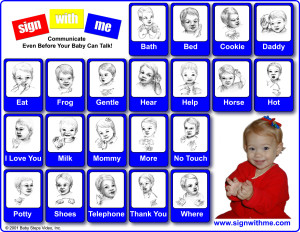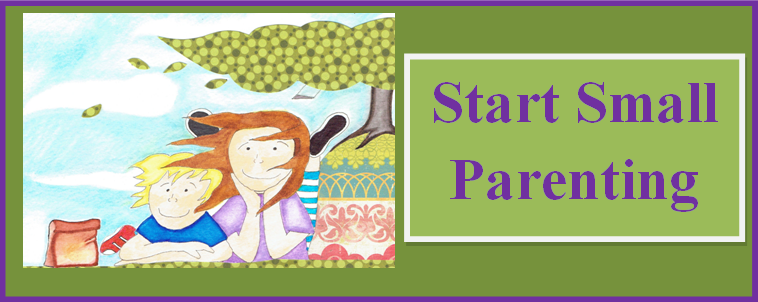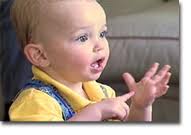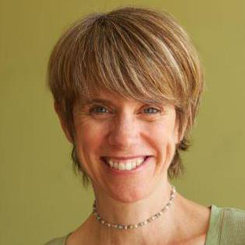I remember my just-hours-old newborn, swaddled up tight, propped on a pillow, fast asleep. Right then and there, I wanted to communicate with him. And it wasn’t long (2 hours when he woke up hungry) before he made his needs known. I learned his language as fast as I could: there was crying (a LOT of crying), smiles, eye and body movements, facial expressions, and sounds. Soon, I could differentiate certain cries and looks and gestures. But I couldn’t help but wonder, was there another way to help facilitate communication with my child? Could I help him more easily make his needs understood?
In college, I had learned basic sign language as part of my dance therapy degree. I always thought it would be neat to try signing with a baby, like I had read about in some of my books. From the beginning, every time my son breast fed, I pumped my fist to make the milk sign. Soon, when I made the sign he would reach for my shirt and pull. I began to make signs for more: toilet, music, bath, all done, book, and thank you.
When my son made his first sign, he was 6 months old.
 I came into the room and he signed milk. I was floored and ecstatic. I signed back yes. It was exciting – a real back and forth interchange.
I came into the room and he signed milk. I was floored and ecstatic. I signed back yes. It was exciting – a real back and forth interchange.
From there, my son learned about a dozen signs that he used regularly. This lowered his frustration level, and whether it was directly related or a side benefit, he had very few tantrums. Not only were we better able to communicate, it was so much FUN!
I loved it when my son learned to talk, but the signs rapidly disappeared as he found more efficient ways to communicate the intricacies of his life experience. I was sad to see them go.
I have been a strong advocate of utilizing sign language with the families I work with. Their reports are positive and often with a similar reaction – they were surprised by the young age which many children could so specifically communicate.
There are several books and videos that you can find to learn basic signs. You may also find a local class for parents of young children.
Here’s a helpful chart from signwithme.com.

Sign language can open an exciting world between parent and child. It also strengthens the bond of connection as the child sees that the expression of their needs are important to their caregivers. Please let me know your experience with sign language and young children.


